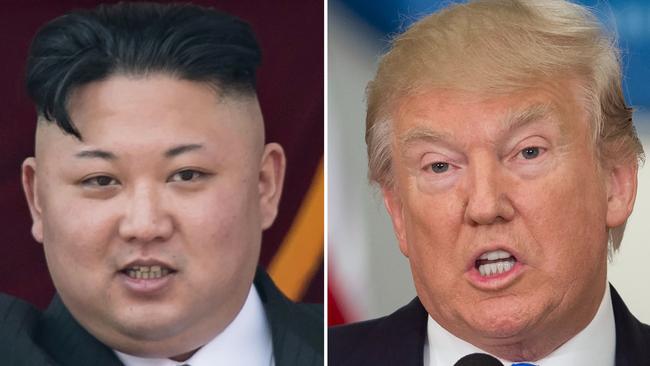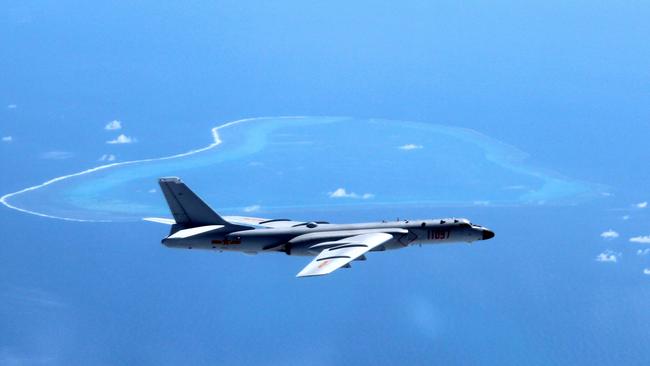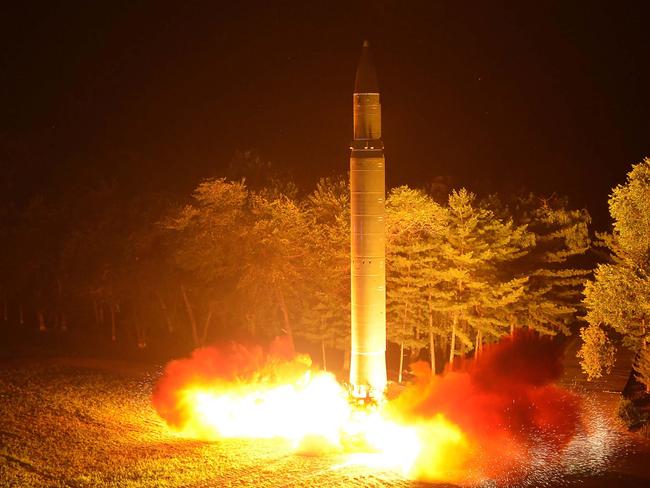China, North Korea, Russia: Global conflicts to watch in 2018
REVEALING report looks at what conflicts are the ones to worry about this year with one “unpredictable actor” causing even more concern.
EIGHT global hot spots have been identified as high risk flashpoints to watch this coming year.
The Council on Foreign Relations survey, conducted by the Center for Preventive Action (CPA), asked global experts to rank 30 ongoing or potential conflicts based on their likelihood of occurring or escalating in the coming year.
Their potential impact on United States national interests was also analysed and ranked according to tiers of risk. The annual survey is used to help US leaders analyse the risks and threats faced in the coming year.

Perhaps unsurprisingly, military conflict between the US and North Korea is one of several scenarios identified as a high-priority risk in this year’s report.
North Korean leader Kim Jong-un and US President Donald Trump were engaged in an ongoing war of words in the lead up to the survey being finalised last year.
The county’s ballistic missile program and a series of tests last year led to Mr Trump calling Kim “little rocket man” during his maiden speech to the UN last September.
His words did not go down well with North Korea with the secretive nation lashing out at Mr Trump.
North Korea’s Foreign Minister Ri Yong-ho branded Mr Trump “a mentally deranged person full of megalomania” and said a strike against the US mainland was “inevitable”.
TENSIONS RISE
An unpredictable US President has further heightened uncertainty, report author Paul Stares told Defense One.
“The US is now the most unpredictable actor in the world today, and that has caused profound unease,” he said.
“You used to be able to pretty much put the US to one side and hold it constant, and look at the world and consider where the biggest sources of unpredictability, insecurity are. Now you have to include the US in that.”
North Korea wasn’t the only high risk concern.
Emerging risks of conflict were also identified in Iran as well as the South China Sea — with both upgraded to a tier one risk in this year’s report.
Other high risks identified include a highly disruptive cyber attack on the US as well as a deliberate or unintended military confrontation between Russia and NATO members.
A potential mass casualty terror attack on US soil as well as intensified violence in both Syria and Afghanistan round out the top tier one risks.

GLOBAL CONCERNS
Dr Malcolm Davis, Senior Analyst in Defence Strategy and Capability at the Australian Strategic Policy Institute, said he wasn’t surprised North Korea and Iran were identified as tier one risks.
“The North Korean threat is most likely to lead to a direct military clash involving the US, with high potential for rapid escalation to use of weapons of mass destruction, including nukes,” Dr Davis said.
“Certainly it would be incredibly costly lives lost, and could escalate horizontally to drag in neighbours.”
Dr Davis said concerns surrounding Iran and risk of escalating tensions with Syria were also obvious.
“That’s already evident with US forces countering a combined Syrian/Iranian force the other week, with Russian private military contractors also involved evidently,” he said.
“At nearly the same time, Israel launched significant air strikes against Syrian and Iranian forces in Syria and Lebanon.”
Dr Davis said a Turkish incursion added to the risk and highlighted how there are several fuses burning which could touch off regional conflict, which could have the potential for things to escalate rapidly.
He also said the unpredictability of Mr Trump fed into both potential flashpoints.
“In the case of North Korea, how he responds when the North Koreans resume missile tests in coming months, or if they do more nuclear tests (including potentially an atmospheric test over the North Pacific) is a big uncertainty,” Dr Davis said.

He highlighted that the US didn’t have a military option that didn’t involve extensive risk.
“Strengthening deterrence avoids war in the short term, but does nothing to prevent the North Koreans from continuing to modernise and expand their nuclear and missile capabilities — raising the prospect of an even bigger and more dangerous crisis down the track,” Dr Davis said.
“There is no clear military option that ensures the US achieves its objectives without great cost and risk, and deterrence may not work in the long term.
“Trump’s unpredictability as President makes this dilemma even more acute, and that uncertainty increases risks, particularly if the North Koreans resume missile testing and nuclear testing, as is likely in coming months.”
Dr Davis said Iran remained a huge concern for the US but concluded that Mr Trump would avoid getting involved in any conflict which could involve Russia.
This would change, however, if Israel was attacked.
He also raised concerns if the US followed through with threats to cancel the Joint Comprehensive Plan of Action — an agreement signed by China, France, Russia, United Kingdom, United States, Germany and the European Union.
“As bad as the agreement is in my view, the situation becomes much worse, with Iran having every justification to race for the bomb — breakout time is about 12 months,” Dr Davis said.
“Then we have two simultaneous and major nuclear crises underway, and an unpredictable US President trying to manage both.”



